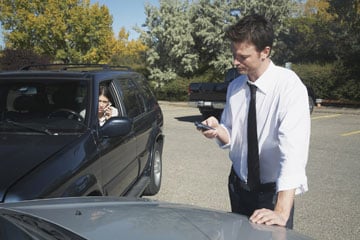 There is no shortage of statistics available for the growing popularity of mobile technology. Personally, the one I found most interesting is that every day, more than 3 million hours are spent playing Angry Birds, a game that began its existence on the iOS mobile platform. While no insurance app is ever going to rival the popularity of flinging wingless birds at green egg-stealing swine, insurers are counting on the power of mobile to impact their claims operations.
There is no shortage of statistics available for the growing popularity of mobile technology. Personally, the one I found most interesting is that every day, more than 3 million hours are spent playing Angry Birds, a game that began its existence on the iOS mobile platform. While no insurance app is ever going to rival the popularity of flinging wingless birds at green egg-stealing swine, insurers are counting on the power of mobile to impact their claims operations.
“The mobile environment is rapidly evolving in terms of the number of devices, capabilities, and usage,” says Jill Rasmussen, assistant director of marketing Web development at Amica Insurance. “Mobile is a space our customers are in, so it's a space we need to be in as well.”
Yet according to Karen Pauli, research director in the insurance practice for TowerGroup, just a few years ago, insurers didn't have a claims strategy around mobile technology. In a 2007 report, she stated that insurers were “slowly” bringing on mobile technology solutions to assist field workers with claims operations, noting that “the process has lacked focus and forward momentum.”
Recommended For You
Want to continue reading?
Become a Free PropertyCasualty360 Digital Reader
Your access to unlimited PropertyCasualty360 content isn’t changing.
Once you are an ALM digital member, you’ll receive:
- Breaking insurance news and analysis, on-site and via our newsletters and custom alerts
- Weekly Insurance Speak podcast featuring exclusive interviews with industry leaders
- Educational webcasts, white papers, and ebooks from industry thought leaders
- Critical converage of the employee benefits and financial advisory markets on our other ALM sites, BenefitsPRO and ThinkAdvisor
Already have an account? Sign In Now
© Touchpoint Markets, All Rights Reserved. Request academic re-use from www.copyright.com. All other uses, submit a request to [email protected]. For more inforrmation visit Asset & Logo Licensing.







